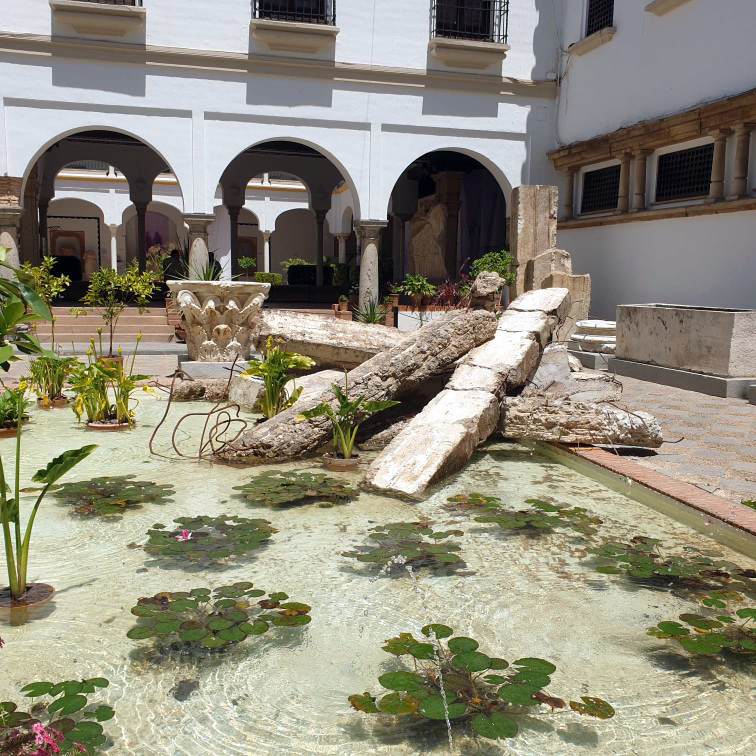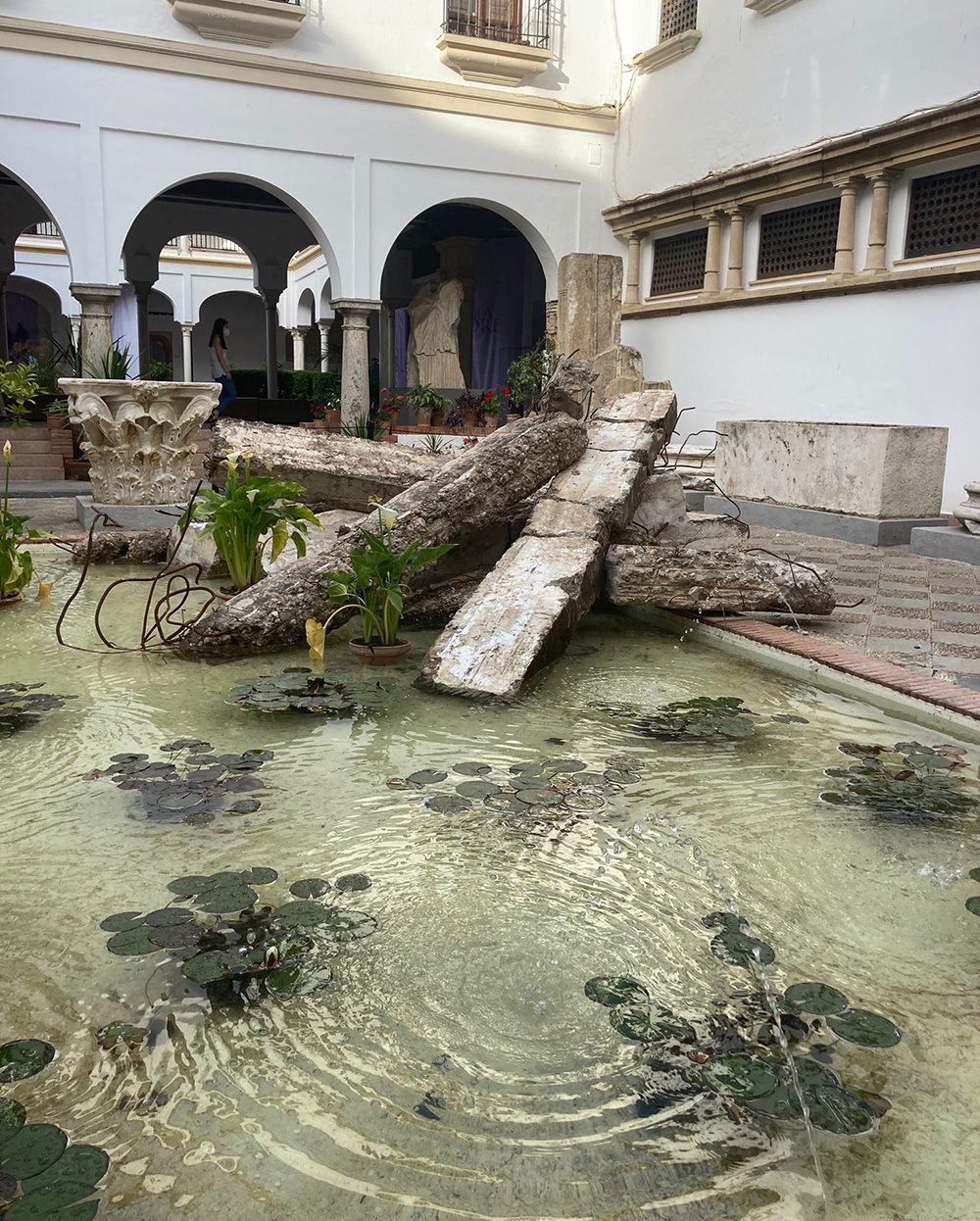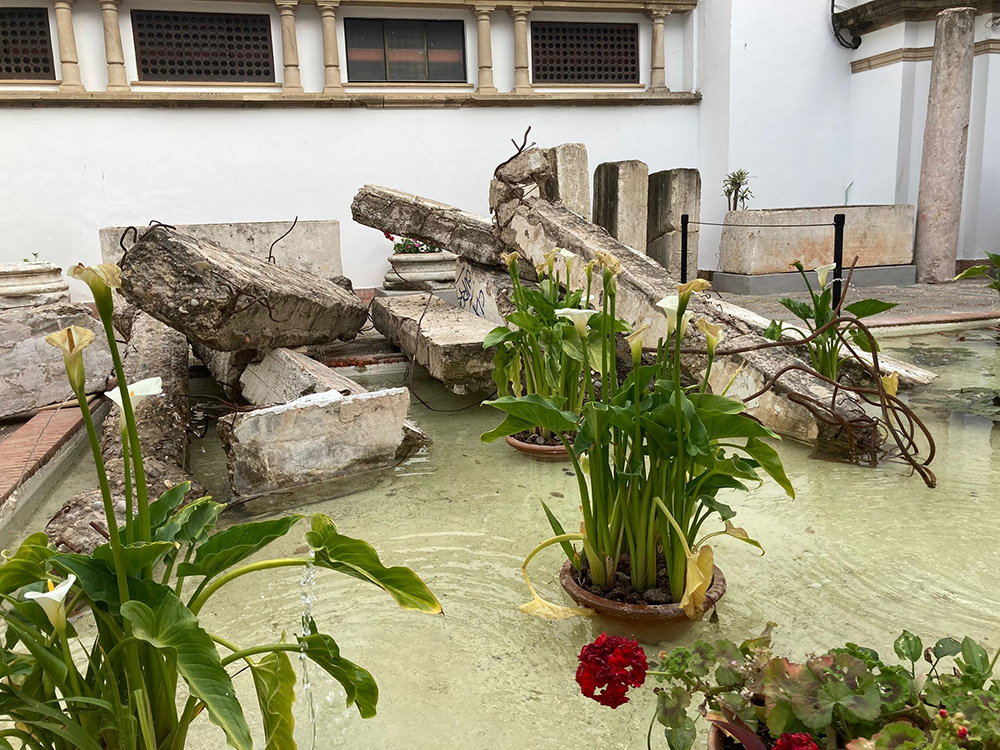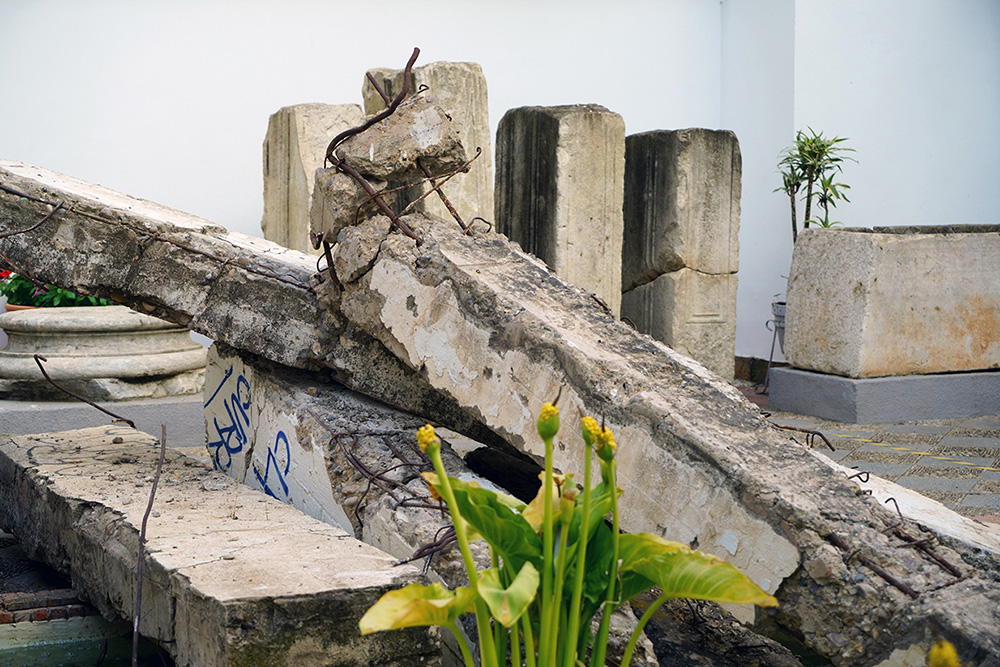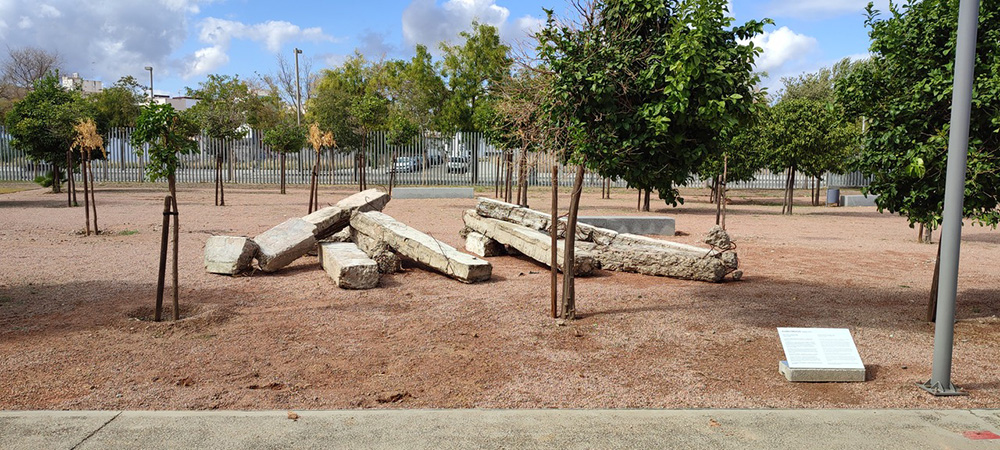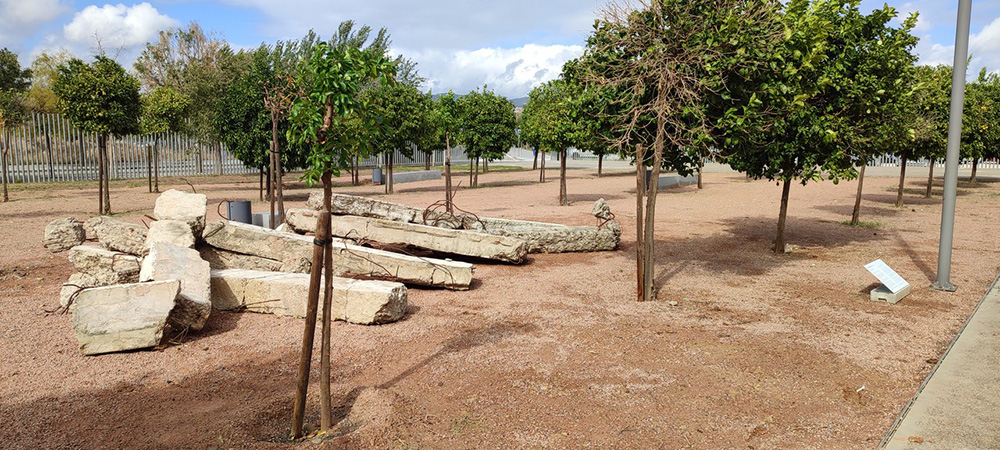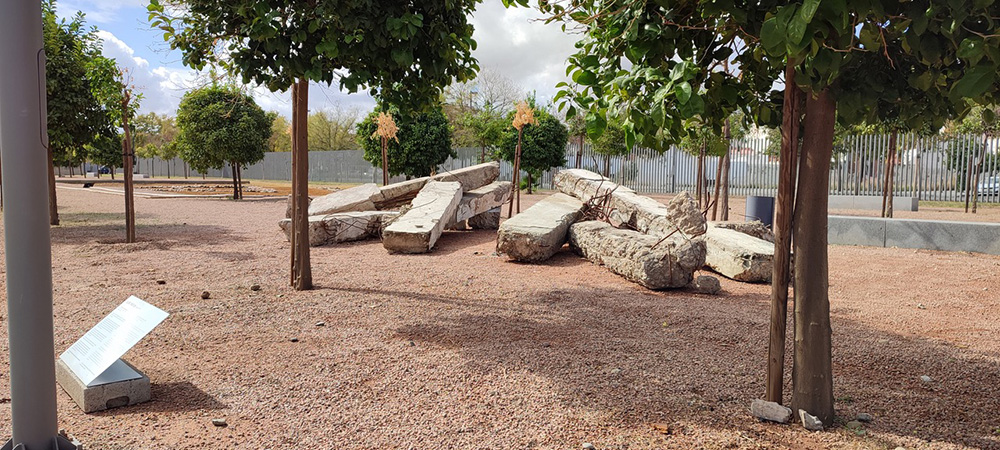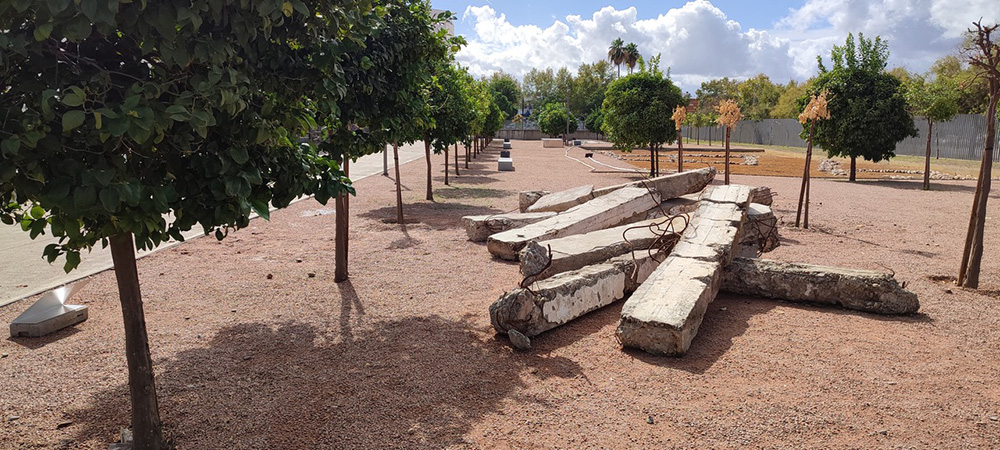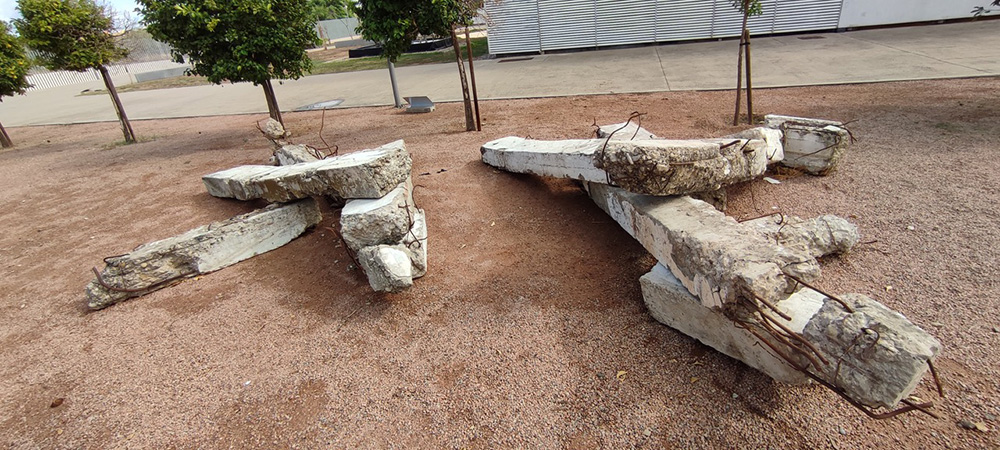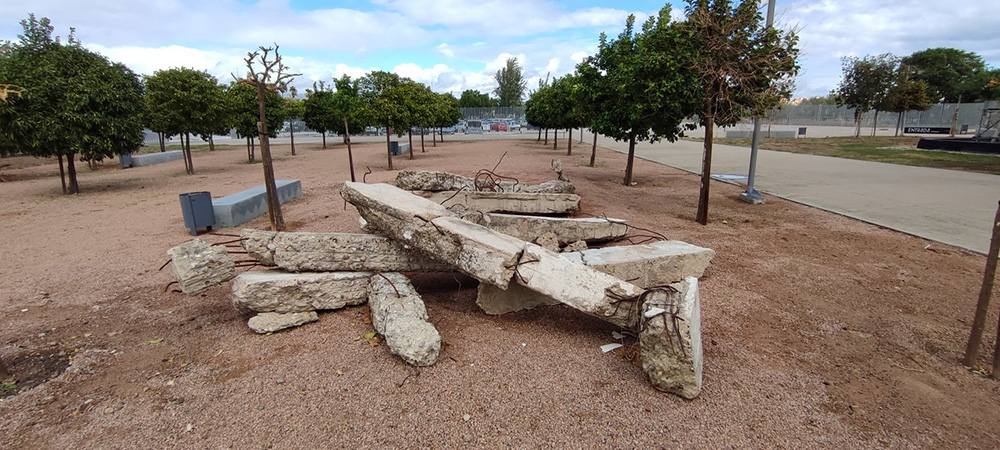The Third Patio:
Los Kebraos
2022
(Concrete and iron pillars, and beams
from the Algodonera, Córdoba)
Installation at Córdoba Arqueological Museum
These broken beams and lintels come from the factory popularly known as La Algodonera de Córdoba. They were part of its structure and served as a support for its warehouses until its closure in 1996.
La Algodonera was one of the most important cotton dismantling and production centers nationwide. It was the flagship of agricultural cooperatives for more than forty years. It was created in 1962 as the Cooperative Society of Cotton Growers and was part of the industrial fabric. It represented important economic progress for the city of Córdoba. This industrial complex covered an area of aprox. 120,000 hectares. It was designed and built beginning in 1951 by architect Rafael de la Hoz, reinstating the language of modernity in architecture during the postwar period in Spain.
According to the press of the time, the cooperative was managed by a Governing Council of members of the so-called Clan de la Caja Rural, which stifled the company, causing its closure. These and other interests of real estate companies sponsored its sale at a public auction in 1998.
The land occupied by this factory was reserved for agricultural use. With great surprise, these lands were proposed within the Urban Development Plan of Córdoba for the extension of the city in the Poniente sector. As a result of the agreement reached between the City Council of Córdoba and the promoters Noriega and Arenal 2000, its use was changed to residential for the construction of houses.
Today its plundered and abandoned remains constitute an archaeological complex that allows us to interpret our recent history. These fragments, like the Roman elements exhibited in this courtyard, emerge unequivocally as products of the cyclical crises of history. They evidence and are testimony of the consequences and decisions of political powers and economic speculation.
